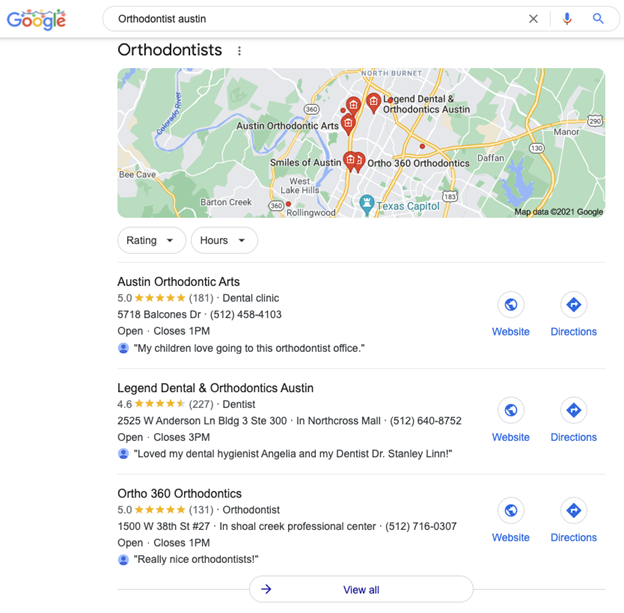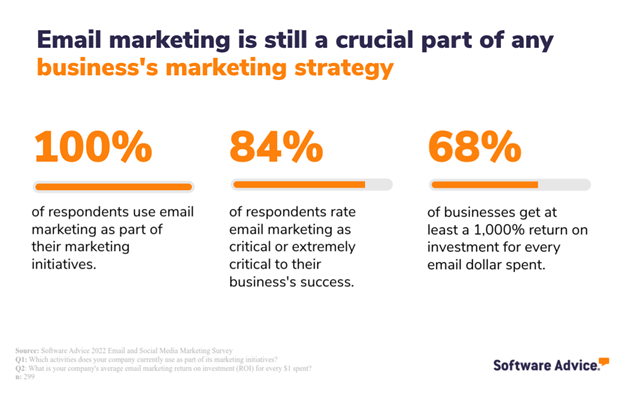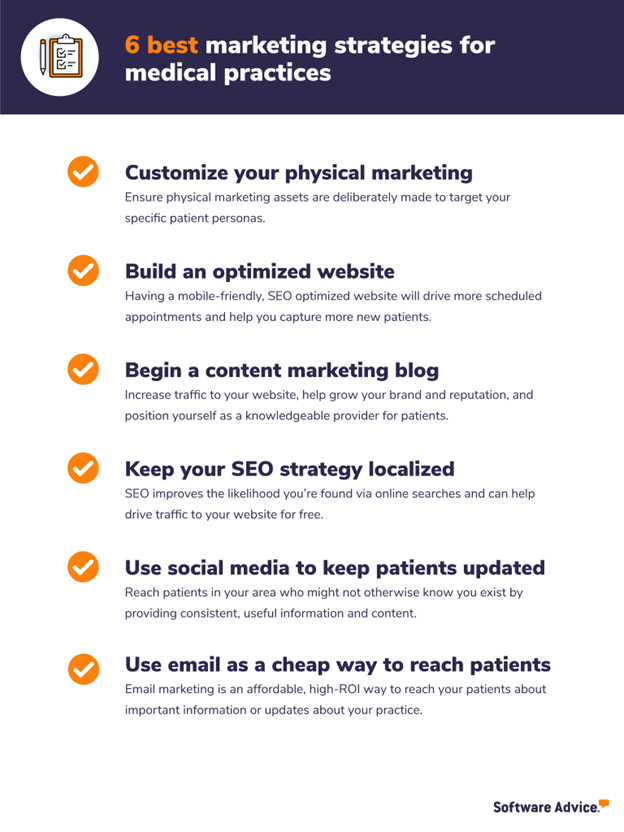Everything You Need To Know About Medical Practice Marketing
If you’re a small practitioner who has just opened up your own practice, and you’re seeking ways to kickstart marketing, you’ve come to the right place. If you’re not prioritizing marketing efforts, your practice will struggle to grow due to fewer referrals; you’ll be less visible online, and you won’t be as memorable with your patients.
But don’t fear—we’re going to help you understand the various ways you can market your practice in order to attract new patients and increase enrollments and referrals.
Dr. Jess Levy [1], a psychiatrist specializing in patients with ADHD, offered several insights into what marketing strategies helped make him successful when he started his own practice. Take what he learned, and see how it can apply to your practice as you build your marketing strategy.
Build an ideal patient persona when developing your marketing strategy
Before you do any actual marketing, it’s important to understand your audience, which means building out some patient personas.
Dr. Levy had a lot of trouble with marketing early on because he tried to target too wide an audience:
Dr. Jess Levy
Psychiatrist specializing in patients with ADHD
Once he took a step back and worked to develop some patient personas, he found not only more success in his marketing, but also was generally more happy overall.
“I made up three imaginary patients. Patients who are truly happy to see me as their doctor because I understood them. I understood their interests and where they come from.
Once I understood what types of patients I wanted and would be able to best serve, I started tailoring my practice and marketing strategies to start capturing them.”
If you aren’t having success with your marketing, you might be trying to do too much. Take a step back and spend some time thinking about the types of patients you want to see.
Do you want to target younger patients? Tailor your practice around making things more digital; younger patients are less likely to call to schedule an appointment or to answer a phone call. Offer texting instead.
Want to work with older patients primarily? Meet them where they’re at by using more familiar, manual methods. Regardless of who you want to target, you should have a clear picture of your perfect patient in mind and be intentionally targeting those patients with each marketing effort you do.
The key is to be intentional and deliberate with your strategies.
“It’s just less stressful and more enjoyable once you have the right patients. I’m finding the patients that I’m getting vibe better with me, so it’s easier to work together. It’s just an overall better experience.
They’re happy and get better outcomes. They refer their friends to see me. They write good reviews and stick with you. Patients that fit will be more understanding when an emergency comes up, and you might need to reschedule.”
Customized business cards can help capture the types of patients you want
When designing your physical marketing assets, it’s important to remember your patient personas. If your ideal patients aren’t the most tech savvy, avoid having information that is hard to access digitally. Instead, have your phone number be the primary contact.
If you want to target younger, more tech savvy patients, you might want to include things such as your website or email address as the prominent information. Dr. Levy took it one step further when developing his business cards.
“My ideal patients are very tech savvy, so I have a QR code on my business card. I don’t actually have my phone number on my business card, and that was an intentional decision. If somebody looks at my business card and says I don’t know what to do with this, that’s good because they probably wouldn’t have been a good fit for my practice.
They might show up to their first appointment and have a bad experience which will lead them to write a bad review. I won’t have a good time, and neither will they.”
In the end, you want your physical marketing assets to directly help funnel your ideal patients into your practice. If that means that you don’t actually do much physical advertising at all, that’s okay—stick to digital marketing instead. If you don’t think that your patients are tech savvy enough to find you digitally, work to increase your physical marketing budget, and send out mailers or set up billboard advertisements.
Search engine optimization (SEO) helps put your name at the top of search results
SEO will be the backbone of your marketing strategy. Every piece of digital marketing you do should go toward improving your SEO.
SEO improves the likelihood you’re found via online searches and can help drive traffic to your website for free as long as your website is optimized correctly. As a medical practice, it’s important to attract as many local patients as possible so that when someone types “[type of] doctors in [city]” into the search engine, your medical practice is one of the first that comes up.

In the above screenshot, you want to be one of the top three listed here before the “View all” button, and you’ll only get that by having a targeted SEO strategy. The more active you are on social media, through your website, and on the internet in general, the more likely you are to come up in the search results.
Step one is making sure you have an official business page on all online directories that mention your business name, location, and contact information. This includes Google, your website, Yelp, Healthgrades, Vitals, and any social media platforms you’re making content for.
The more directories, review sites, and social media pages that contain your business information, the better, because it gives search engines confidence that you are a real business that is reliable, which is what the person searching is looking for.
You can also take steps to optimize your website to ensure that you are given the best chance possible. An active blog with useful articles, tips, and healthcare information gives the search engine more information about your site, which makes it easier for it to recommend you whenever someone searches for doctors in your area.
SEO optimization can be daunting, so don’t be afraid to ask for help.
“One thing I did was go onto Reddit and ask for help. Somebody with much more SEO experience actually went through my webpage and offered critiques and suggestions about how to improve my page and make it more SEO-friendly, so don’t hesitate to ask for help on online communities and forums. People are happy to help.”
In addition to getting some critiques on his webpage, Dr. Levy offered up some more advice that has helped him continue to improve his SEO:
“Everytime a patient calls with a question, write it down. If you start noticing that a lot of patients are calling and asking the same question, make sure to address that question prominently on your website or through social media.
I was constantly being called and asked if I was accepting new patients, so I plan on putting a huge banner on my homepage that says ‘We are accepting new patients’ with a button that leads to my enrollment forms.”
If you don’t think you have the time or knowhow to tackle SEO on your own, don’t hesitate to hire an outside consultant, but make sure they are local to your area so they will understand your target audience.
An optimized website helps with SEO and gives patients a place to interact with your practice
If you don’t have a website, you’re already less marketable to patients.
Having one is so important that all other digital marketing efforts must point back to your website. Your social media pages need to link back, your blog needs to link back, and your emails need to link back.
A responsive, user-friendly website helps you with SEO. Search engines prioritize responsive websites, which is a website that adapts to different screen sizes. It will fit all of the information on the screen in a usable, visually appealing way regardless of the screen size, so people who primarily interface with the internet via their mobile devices have the same experience as those who use a laptop or desktop computer.
Luckily, it’s never been easier to have a nice-looking, optimized website. Whether that’s hiring a contractor or service to build you one from scratch or using a website builder, you can make a reasonably optimized website where you can house important information patients are looking for when choosing their provider.
“When designing my website, I spent a lot of time looking at other websites that I liked or I thought my patients might like. I specialize in treating patients with ADD, so I wanted to make sure that my website had an ADD-friendly interface.
All my enrollment forms are online because I know my patients. They aren’t going to want to print out and fill out all these forms and bring them in.
And it can all be done on their phone.”

Example of Wix’s custom website builder (Source)
When thinking about your website, it’s important to consider a couple factors:
Ensure it’s responsive and mobile friendly
It’s safe to assume most people who will find your website will be doing so on a mobile device, so it’s absolutely essential that your website is mobile friendly. The difference between a normal website and a mobile-friendly website is that a mobile-friendly website will have a more flexible structure.
Mobile-optimized websites are standard fare for nearly all website developers and builders these days, but double check your options to ensure that mobile optimization is available when making your website.
Include the services you provide
Make sure you have a visible, easily accessible link to all of the services and treatments you provide someone on the homepage, as well as in any dropdown menus you include on the homepage. You might also want to include a link to your patient portal, blog, and social media pages.
You can use lead forms that link to your appointment scheduling system in order to capture new patients by making it simple for them to go from looking at your services to booking. In fact, these lead forms should be a key part of your healthcare marketing strategy.
Tips: Keep your lead forms accessible and easy to fill out. Patients will be put out if the form is unnecessarily long to simply schedule an appointment. If you need more patient information, wait until after they’ve scheduled to get what you need from them.
Begin content marketing by starting a blog to position yourself as a knowledgeable, trustworthy practitioner
Writing consistent content for a blog can be time consuming, but it is a vital part of any content marketing strategy for medical practice marketing. You can increase traffic to your website through improved SEO, help grow your brand awareness and reputation, and position yourself as a knowledgeable, trustworthy provider for current and future patients.
Dr. Levy had some advice about how to make blogging easier:
“I have three different roles that I try to embody during each post. Role one was Gen Z whisperer. I’m tech savvy, I can talk about video games, and I can relate to younger kids.
The second role is a professional with ADHD. I talk about that on my 'about me' page on my website and try to position myself that way on my website.
The third role is medicine guru or medicine fixer upper.”
He built his website and online presence around those three things in order to help position himself a certain way to his potential patients. It was an intentional and deliberate course of action to ensure he gets his ideal patients.
Maintaining a blog can be hard, especially when you’re trying to grow your practice, but it really does help improve your SEO as well as makes you more marketable to potential new patients.
By writing consistently, you’re showing patients that you know what you’re talking about. By having educational resources available, patients are more likely to trust you implicitly which means they will choose your practice or refer to your practice more frequently.
Make sure to keep each piece of content focused on one particular topic. Your content should be concise and informative so that your reader is able to get the most out of it. Search your topic online, and find what other people are writing about and try to find gaps in their content that your knowledge and expertise can fill to make your content stand out more.
Don’t forget that when it comes to medical marketing and content, written blogs are not the only viable format. Infographics, videos, and patient testimonials will also help your content marketing strategy by attracting and engaging your patients.
Tip
Easy topics to include in your blog are information about your specialty, interesting trends in your field, or personal stories from your staff and patients. Create personas for yourself, and make sure each blog post is positioned from one of those perspectives.
Social media marketing connects you with your patients in a more meaningful, hands-on way
According to the Pew Research Center [2], roughly 70% of Americans say they use at least one social media site. Having a social media presence helps you attract new patients—particularly if you’re highlighting patient testimonials or have a patient referral plan set up. Social media is a vital part of your digital marketing strategy.
For more information about the different pros and cons of social media for doctors, check out the video below:
Your healthcare organization social media page is more than just a place to share photos and opinions. Instead, think of each of your social media pages as another business directory where you can provide patients with a way to quickly contact you. Include your phone number, email address, and location prominently.
“There’s nothing more frustrating than going to a doctor’s social media page, and it’s out of date. If it hasn’t been updated in a year it makes me wonder if they’re even still in business or if they care.”
The first step is making sure you are established on at least Facebook, Instagram, LinkedIn, Twitter, and any specialty-specific platforms that might exist in your field.
In order to determine which platforms to prioritize, you can poll your patients about which social media they engage with more frequently. If the majority of your patients only use Facebook, you will want to prioritize posting there.
You don’t necessarily have to be active on those platforms every minute of every day, but it’s important to have someone on your staff post important information such as a change in hours or schedule.
“I post updates about my blog and how my practice is growing. I try to create a community around my practice and around ADHD because that’s what I specialize in.”
You might want to post more lighthearted videos or posts that show off your staff’s personalities. Social media is not only a great place to improve your SEO, but it also is a great way for you to make your patients feel more like your family.
Additionally, you want to promote your social media pages through your email newsletters, through your website, and whenever your patients are in your practice to maximize the number of followers you have.
Social media advertising is also a great way to help you reach patients in your area who might not otherwise know your medical practice exists.
If a potential patient runs across your profile, you want it to seem like you’re active and engaging, which might be the difference between them choosing your practice and going with someone else.
In order to have a successful healthcare marketing strategy on social media, consider the following:
Be consistent and organized
Optimize your content properly
Be interactive with the patients responding to your posts
Post regularly to encourage engagement
Use real photos and content from your medical practice and not generic screenshots
Drive patients to your website by sharing content from your blog
And remember, if you don’t know where to begin, social media marketing software can help you track metrics and develop a more concrete, comprehensive social media marketing strategy.
Email marketing drives traffic to your website and social media pages
Email marketing is still one of the best ways to get a return on your investment. If you want to get more enrollments, you should seriously consider email marketing.
Email marketing has a few notable benefits for healthcare organizations.
Free or low-cost marketing channel: If you have limited resources, taking advantage of inexpensive opportunities to reach your ideal patient is critical. You have your patients’ email addresses already, so you can take advantage of that by sending personalized messages or email newsletters that link to your website or social media pages. This will help you collect valuable data and insights, all without spending any extra money.
High ROI: According to our 2022 Software Advice Email and Social Media Marketing Survey*, over one-third (34%) of businesses get 21% to 40% of their total business revenue from email marketing alone. Additionally, 68% of respondents get at least a 1,000% ROI for every dollar spent, with a portion of those getting as high as 4,900% ROI.
You fully own your email marketing: You have complete control over your email marketing compared to things such as SEO or social media marketing which usually rely on third parties to succeed. Email marketing is relatively static compared to the shifting whims of a search engine and its algorithms or the uncertainty of social media.
It’s often your patients’ preferred communication channel: While some patients might prefer phone calls or text messages, many will prefer to receive their information via email because they’ve grown accustomed to that form of communication for important updates.

Tip
Use email marketing software to create weekly, bi-weekly, or monthly newsletters that go over any promotions, news, updates, or important dates that might be coming up. Additionally, you can be more personalized with your emails by sending specific groups of patients, such as those with chronic conditions, educational materials to help keep them on track.
Here's a quick video about the steps you need to take to improve email marketing.
Successful medical practice marketing is attainable with some intentionality and deliberate messaging
Marketing can seem like a daunting task when you’re first starting out, but as long as you develop a set of ideal patient personas and are deliberate in making sure all your marketing efforts relate to and target those personas, you should see increased levels of patient enrollments, referrals, and positive reviews.

Survey methodology
[*] 2022 Software Advice Email and Social Media Marketing Survey
Software Advice conducted this survey in January 2022 among 299 respondents to learn more about small, midsize and large business email and social media marketing tactics. Respondents were screened for full-time employees of all company sizes that have involvement with marketing-related activities. They must have been working within roles including advertising, brand management, customer experience or service, data and analytics, IT, marketing, product marketing and management, sales or strategic planning and be current email and social media marketing users.
Note: Questions and responses have been edited for brevity and clarity.
Note: The applications mentioned in this article are examples to show a feature in context and are not intended as endorsements or recommendations.